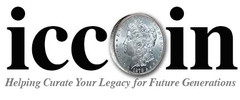The Importance of Mintmarks: Little Things Can Mean a Lot
by John Devitt
CLICK HERE for a chart on MINTMARK LOCATIONS FOR COMMON U.S. COINS

Coin mintmarks began in Ancient Greece, as a sort of signature for the official responsible for accurate weights. These "Magistrate Marks" identified each coin's producer, so if a coin's silver or gold content proved to be underweight, its origin was clear. If discrepencies proved chronic, the reputation of the mint might suffer and a dishonest minter's health could also be in jeopardy. Ancient Roman coins carried letter or number mintmarks to indicate the provenance of imperial coins throughout the vast Empire. The practice continued in medieval Europe, where even some base-metal coins bore mintmarks to ensure weight standardization. Often mintmarks were in the form of objects such as a rose, bell, arrow or cross. Of course, reliably accurate weight was most important for gold coins and perhaps the greatest diversity of mintmarks remains Florence's 1300-1505 florino d'oro, with hundreds of different mintmarks used over two centuries! Debasing gold coins could be a capital offense, and assayers' initials as well as mintmarks made them easy to trace. One of the most famous mintmarks of early Spanish-America is the Mexico City Mint's "O over M" emblem, which continues unchanged today after a history of four centuries. British gold sovereigns of centuries past had the most far-flung mintmarks, including the Ottawa Mint's "C" for Canada and the Bombay Mint's "I" for India.
Mintmarks in the United States Had a Late Start
For the first few decades, only the Philadelphia Mint produced U.S. coins, so no mintmarks were used. The first U.S. branch mints opened in 1838 were all in the South: the Charlotte, North Carolina ("C" mintmark) and Dahlonega, Georgia ("D") facilities exclusively produced gold coins until 1861 and the New Orleans ("O") Mint also struck silver coins. After the Gold Rush, the San Francisco branch mint ("S") produced some gold coins, but silver dollars became its chief specialty. The small Carson City, Nevada branch mint ("CC") opened for business in 1870 near the huge Comstock Lode silver mines. After issuing relatively limited quantities of silver and gold coins, it closed in 1893 following employee thefts and apparently unfounded accusations of underweight gold $20 coins. In 1906, the big new Denver Mint inherited the long-retired Dahlonega "D" mintmark and continues today as the largest producer of branch-mint circulation coinage (the New Orleans Mint permanently closed in 1909, after a previous Civil War/Reconstruction hiatus in the span 1861-1878). America's newest branch mint at West Point, New York ("W") specializes in commemorative issues plus gold and silver eagles.
The principal Philadelphia Mint did not employ a mintmark until 1942: its "P" first distinguished wartime silver-content 5 cent pieces from regular nickels when extremely hard nickel was a critical component in arms production. After World War II, the next appearance of the "P" mintmark was for the first 1979 Susan B. Anthony dollar and in 1980 the "P" was placed on all U.S. denominations except the cent. From 1965-1967, mintmarks were briefly dropped from U.S. coinage, so no one knows where individual multi-mint coins of that time were actually struck.
Mintmarks as a Vital Part of Coin Collecting
Strange as it may seem today, mintmarks were largely ignored by American coin collectors until the 1890's. Previously, most had simply collected coins by type and date. That's one reason why so few "CC" Morgan dollars were saved in circulation, to use just one example of many future coin treasures overlooked in their own time. In 1909 the first Lincoln cents were widely saved, but not that many of the 1909-S VDB (with designer Victor D. Brenner's initials), whose abbreviated mintage was less than half a million. Today this coveted issue commands four figures, while the Philadelphia 1909 VDB is easily affordable. The only comparably valuable issue in the series is the "Missing D" 1922 cent, a year when only Denver struck cents and the "D" mintmark wore off some dies. The most valuable issues in the Washington quarter series are the initial 1932-D and 1932-S releases, whose mintages were less than one-tenth of the no-mintmark Philadelphia output. Savvy collectors who put away newly released 1927-D gold $20 coins did their heirs a great favor, for today nice mint-state specimens can command over a million dollars. Those who bought the first West Point 1995-W silver dollar eagle proof (just 30,125 originally sold) have seen its value soar to the thousands of dollars, while the 1995-P issue has enjoyed a fine but far less impressive rise.
CLICK HERE for a chart on MINTMARK LOCATIONS FOR COMMON U.S. COINS
Shop With Confidence. At ICCoin, We Stand Behind Each And Every Item We Sell.
